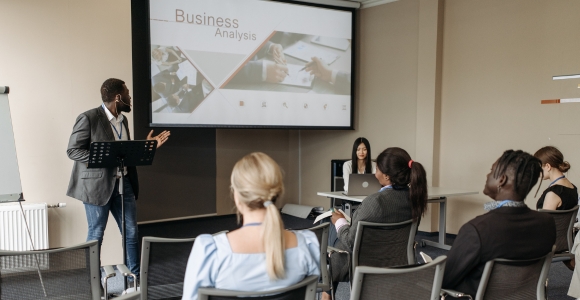It’s 9 a.m., and a team of remote and in-office employees has dialed into a high-stakes client meeting. But the in-room microphone cuts out, the camera isn’t connecting, and the screen share lags. Instead of focusing on the meeting’s agenda, the first 10 minutes get lost to troubleshooting. One study found that 30% of sales professionals believe their web conferencing tools are doing more to hinder sales than help them. When AV doesn’t work, productivity drops and bottom lines suffer.
Today, collaboration spans locations, platforms, and time zones, requiring clear and reliable communication. Continuity starts with dependable audiovisual (AV) systems. To ensure your AV systems don’t have issues, you need the system to have a practical design, available tech support, and compatibility with future needs.
Designing for Practical Performance
Modern AV environments are not one-size-fits-all. Every space presents challenges, including room acoustics, lighting, and user behavior. To be effective, AV systems must support communication in real-world conditions.
- Space-Aware Design: Effective AV design takes into account the physical environment. Your provider should evaluate background noise, sightlines, and camera positioning, ensuring clear communication. Automated camera tracking can also help maintain consistent video framing without manual adjustments.
- System Cohesion: AV solutions often span multiple components, including displays, microphones, speakers, lighting, and conferencing platforms. A coordinated approach enables these tools to function seamlessly under a centralized control hub, rather than as separate elements with individual troubleshooting and testing needs.
- Ease of Operation: User experience plays a key role in adoption. Systems that are intuitive to operate reduce reliance on technical staff and support more consistent use, whether in a meeting room, classroom, or shared workspace.
Beyond AV Installation
Support shouldn’t end after installing a system. Verinext provides end-to-end service, from planning and implementation to ongoing support and maintenance, ensuring the environment remains reliable and effective long after the initial rollout.
Planning for What’s Next
AV system design should have your future needs in mind. As technology continues to evolve, these systems must be able to integrate with new platforms, devices, and software updates. Flexibility allows organizations to scale their AV environments and adapt to changing workflows without requiring a system overhaul.
In corporate offices, AV enables hybrid meetings with consistent performance. In healthcare settings, it improves provider coordination and patient interactions. Educational institutions benefit from technology that supports both in-person and remote learning. In retail, AV systems help engage customers and deliver timely, dynamic messaging through digital displays. While the specific use cases may vary, the role of AV across industries remains consistent: to support clear and reliable communication.
Better Collaboration Starts with Better Tools
AV infrastructure enables communication that moves projects forward, supports decision-making, and connects people across distances. That’s why, at Verinext, we bring together technical expertise and real-world experience to design and implement AV systems that are practical, reliable, and built to last. Our approach is rooted in thoughtful consultation, integrated technology, and ongoing support, allowing your teams to focus on collaboration instead of the tools behind it.
Contact our team to explore how Verinext can help design and support your AV environment through our commercial AV solutions.
Related Posts:
How to Power Real-Time Performance at the Edge
Building Trust Through Consultative Partnerships: Channel Voices Podcast






